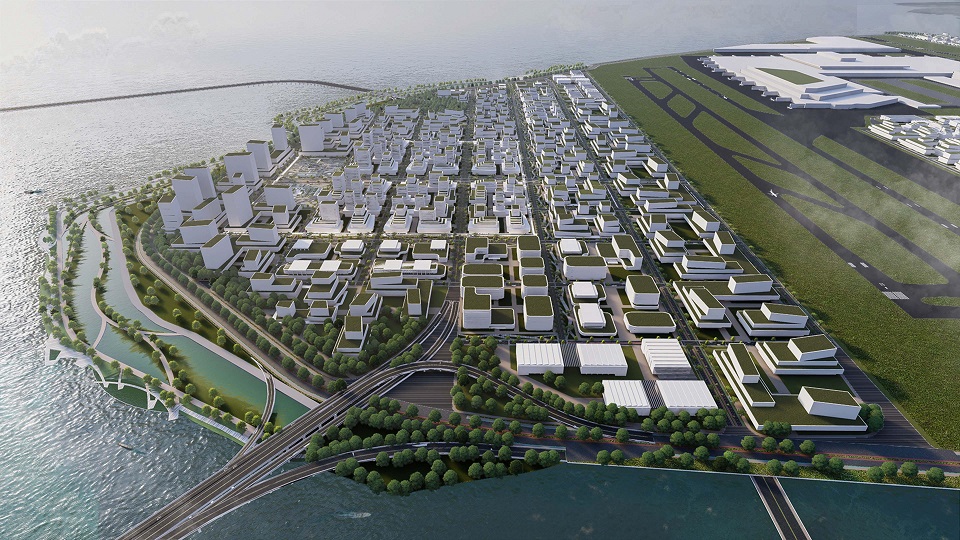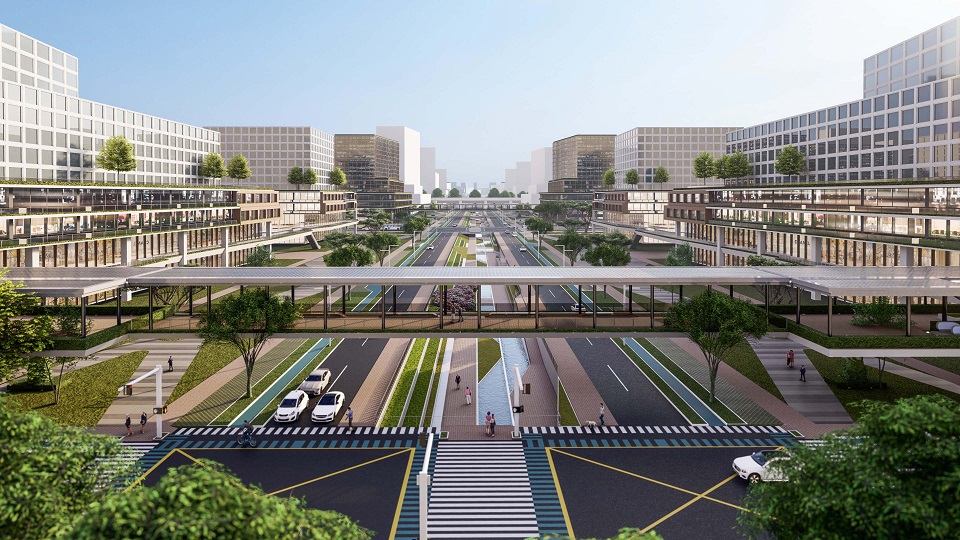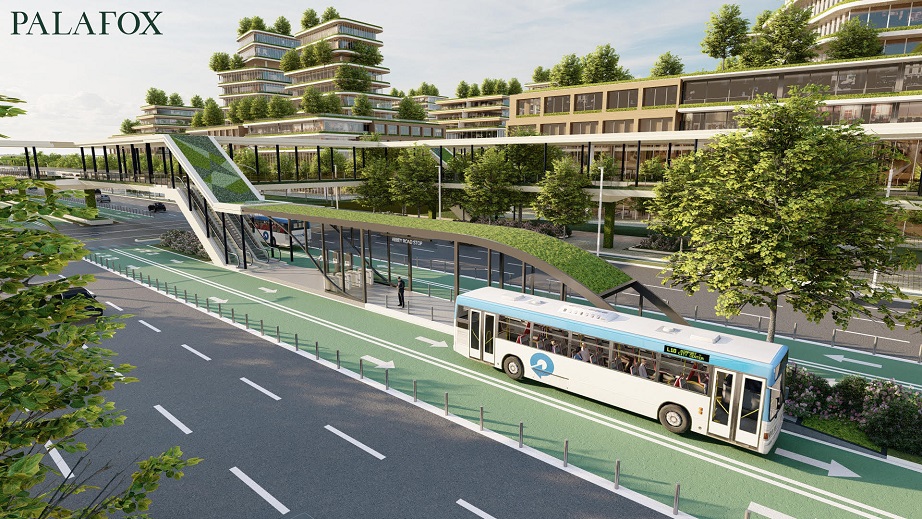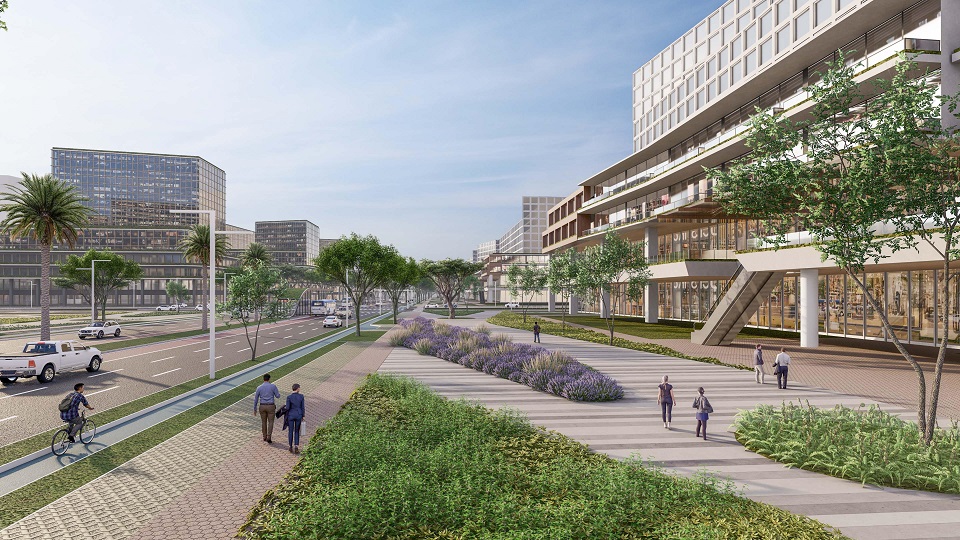Government stands to reap upwards of US$200B in export revenues annually from potential foreign investors from the aviation, manufacturing, technology, education, healthcare, and tourism industries if the vision for the Bulacan Airport Economic Zone is realized, SMC President and Chief Executive Officer Ramon S. Ang said.
Ang says the Bulacan ecozone to accelerate economic growth and contribute US$200B in export revenues annually.
Read LOOK: This is what the airport city in Bulacan could look like
Bulacan Airport City Special Economic Zone and Freeport

Following the recent veto by Malacanang of House Bill 7575, “An Act Establishing the Bulacan Airport City Special Economic Zone and Freeport,” Ang expressed optimism that the vision for the ecozone could still be realized, given the many benefits it will bring to the country.
“We respect and abide by the government’s decision. We thank him for recognizing where the proposed Freeport bill can be further improved, and we look forward to working with his administration towards perfecting this. We are eager to continue working with the government and play an active role in helping our country reach its goals — as we have faithfully and consistently done,” said Ang.
Ang, whose SMC is fully financing and building the P740 -billion New Manila International Airport (NMIA) project in Bulacan, maintained a positive outlook about the decision, saying that if all the issues raised in the President’s veto could be addressed and recognizing that the primary intent of the ecozone is for the benefit the country and Filipinos, its full potential could still be realized.
Read SMC Bares Plan to Protect Birds around Bulacan Airport Project
Ang added that the Bulacan economic zone if approved, would be managed by the Philippine government, and any tax incentives to be given to investors will still pass the Department of Finance’s Fiscal Incentives Review Board (FIRB) review and approval process to ensure these are aligned with the CREATE Law.
The CREATE Law was enacted to provide relief to foreign and local corporations already doing business in the Philippines in light of the pandemic.

“Among our plans for the ecozone is to help create science and technology export hubs with the cheapest logistics cost because these will be close to the airport and seaport. We are looking to attract world-class semiconductor manufacturers, battery power storage system manufacturers, electric vehicle makers, and even modular nuclear power assemblies, and other new and emerging tech industries. We estimate these industries alone will add some US$200 billion in annual exports—a big boost to our GDP,” Ang said.
He firmly believed that the long-term benefits to the country of the ecozone would far outweigh and outnumber any supposed “losses” due to the grant of incentives to potential investors.
He said these benefits include hundreds of thousands of new jobs to be generated, which will benefit future generations of young Filipino graduates, professionals, and skilled workers.
The transfer of knowledge and technology from foreign investors and locators, as well as access to world-class education and healthcare opportunities and services — industries the ecozone also looks to attract — would be invaluable.
These are on top of the trillions in tax revenues that will accrue to the government for the entire lifetime of the ecozone and airport, coming from the various industries and institutions that will set up facilities and operations there to take advantage of the low-cost logistics, incentives, and our country’s primary asset: a high-quality workforce.
“Incentives are a way for the government to attract much-needed investments into our country, especially now that we are all pulling together to help our economy not just recover but continuously grow in the post-pandemic era. This way, our future generations will have enough and better opportunities than we have.”
NAIA, Bulacan Airport City Economic Zone, and Clark International Airport

Ang also addressed the issue of NMIA being close to the Clark Airport, which was mentioned in the veto and was initially raised by the DoF under the previous administration, which said NMIA would “compete” with Clark International Airport.
Ang said that apart from the considerable distance between the two airports—Clark is approximately some 100 kilometers from Metro Manila—large and progressive cities all over the world employ a multiple airport strategy, such as Tokyo and New York, among others.
Anticipating the long-term population and economic growth of Metro Manila and Luzon provinces in the next 20-30 years, and taking into consideration the limited expansion opportunities for the current gateway, Ninoy Aquino International Airport (NAIA)—which only has space for one runway operating at any given time, compared to NMIA’s four parallel runways—-the country would need several airports to serve Filipinos, tourists, and industries efficiently, Ang added.
“We don’t want to repeat the mistakes of the past where we were not quick enough to develop new infrastructure, giving rise to overcapacity and congestion on our aging roads, ports, and other facilities, and even in our skies. Temporary fixes will not do anymore. We are building for the future, with a clear vision of a fully-developed and progressive, prosperous Philippines,” Ang said.
Ang said that regardless of the outcome of any further government review or action on the ecozone, SMC remains fully committed to continuing on its path of growth through nation-building and building the NMIA—seen as the solution to decades of air traffic and land congestion that have severely limited the country’s development.

“We believe in and fully subscribe to President Marcos’ message of unity. We have always tried to demonstrate it in many ways, particularly in times of great difficulty for our nation. We will do everything we can to help President Bongbong Marcos and his administration succeed because their success is our country’s success,” Ang added.
“We look forward to working with them and contributing to their efforts to build our country back even better,” Ang said.